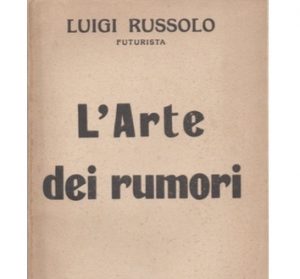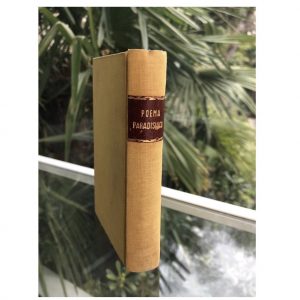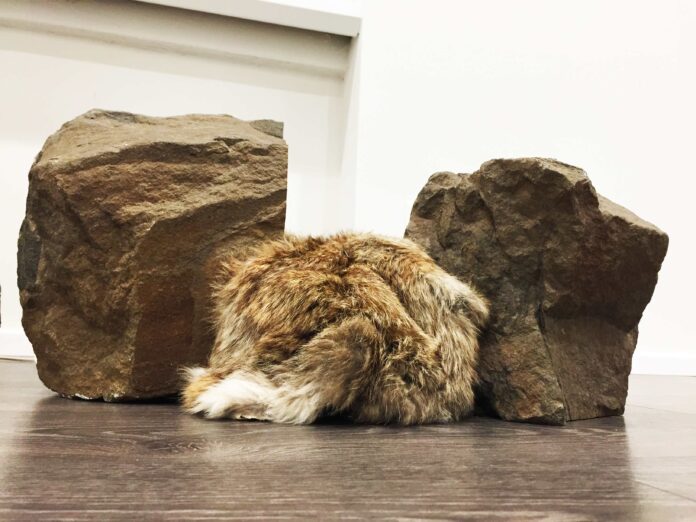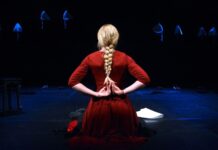Happily, Ravizza gallery in Lugano has broadened its content horizons. It goes on dealing with the artists of today and yesterday (all contemporary). At the same time, the firm starts a path that you could say self-referential, or unproductive, in relation to the usual activity of a contemporary art gallery interested in languages that are or have been new. What does the inventive owner Allegra Ravizza do? She creates archival itineraries. But without mold or mice’s stench . Instead, with interest for vitality, that is, to make what has been lived revive.

Is futurism a closed chapter or book? She makes herself an emulator of Pierlambicchi, the famous character in the comics terrain who, with a brushstroke of his arch-paint, was able to give real life to photographed or painted characters hanging on the wall. La Allegra passes her arch-paint on the futurism phenomenon, taking music as a pivot. She “builds” a catalog of about 50 pages with attention to the philological field and with the push of her own feeling. So you find comfortably first editions of books, theoretical posters, music scores, etc. Allegra – she herself declares it – does not intend to behave as a historian or a specialist.
Anyway, she does the opportune research, and the newfound stimulates her, and she gets carried away by Russolo, Silvio Mix, Papini, and so on. So, she builds “her” archive, never aseptic, but rather contagious. With the architect Carlo Ziliotto, she variously assembles her six cubes, her own scenographic paraphernalia, perhaps with memory of the “practicables” introduced by Adolphe Appia. In doing this, the art lover thus creates her wunderkammer, either in the physical location or in the mobile one, i.e. the page. And flip through the pages, amazed, and enjoying it. Alongside with her. All this under the title “Experimental Plan 1, Museum of Futurism part II”. And she is the puparo, Allegra Ravizza, who shows her second identity, after that of gallery owner with multiple curiosities. For example, towards literature. In times of possible depressions, she spreads D’Annunzio from whose Poema Paradisiaco (Heavenly Poem), which was a point of reference for crepuscular poets. She releases one poem per day for a total of 100 messages. A very interesting idea.

To testify her attention for the artists of her interest Allegra Ravizza dedicated an exhibition to Günter Weseler. It is not the case of a famous name, but we refer to a historical and fascinating artist, capable of realizing a very original research path, well beyond any formalism. His physical pathology led him to plunge himself into breathing since 1964 (he was born in Poland in 1930, and lives in Düsseldorf). He really touches the “core” of anti-aestheticism and anti-formalism. And this, it must be said, far beyond the game of words between monochrome and achrome (especially by Piero Manzoni). The exhibition conceived by Ravizza (which has been conceived on purpose) bears the title of the series of works “Breathing Objects“.
And they really breathe, these object-performances. And unlike Gianni Colombo‘s no less interesting kinetic objects. The physiology of breathing is, for Weseler, a daily physical and spiritual bread. He knows breath’s most hidden secrets, to which he also adds his speculation as a longa manus of physiology as well as a metaphorical transfer. But this without losing the first soil of the breath, he physiology, so that the metaphor also breathes. In fact, the breathing object combines meets the space towards which it is responsive to each other.
Thanks to that, Weseler passes from rhythm to movement in space, almost as if he were a doctor-artist (but we must consider that he studied architecture) who emulates Jaques-Dalcroze’s eurythmics conceiving the shifting of the rhythm in spatial movement on which the aforementioned Adolphe Appia fed. It goes without saying that Weseler’s success so far is faulty and unsatisfactory in relation to what is deserved by his value.








